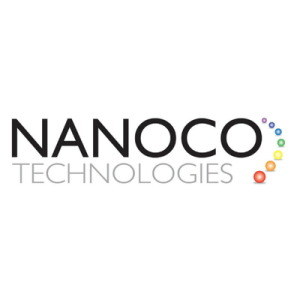Nanoco Group plc (LON:NANO), a world leader in the development and manufacture of cadmium-free quantum dots and other specific nanomaterials emanating from our technology platform, has noted the voting recommendations recently published by Institutional Shareholder Services in relation to the Group’s forthcoming General Meeting to be held on 14 August 2023:
· to vote AGAINST all the resolutions to remove the current Board of Nanoco
· to vote AGAINST the proposed appointment of the following director nominees:
o Tariq Hamoodi
o Greg Moeller
o Dooyong Lee
o Benjamin Barnett
o Ikchoon Tim Kang
Non-Executive Director recruitment process
As previously stated in the Group’s 2022 Annual Report & Accounts (page 53), and in the Circular published in relation to the General Meeting, the Board has indicated that it would add additional skills and experience at an appropriate time to match the Company’s phase of development and available funding. The Board has already started the search for an additional independent non-executive director with strong sector relevant commercial experience, to support the Board as we ramp up production. The Nomination Committee of the Board is interested in meeting with strong candidates with the requisite skillset. If Mr Eric Achtmann, who ISS have recommended as the only nominee with the closest background to the business and technical experience required to be considered an appropriate non-executive director candidate, wishes to participate in this process, we would consider his application in the usual way.
Nanoco Group (LON: NANO) harnesses the power of nano-materials. Nano-materials are materials with dimensions typically in the range 1 – 100 nm. Nano-materials have a range of useful properties, including optical and electronic. Quantum dots are a subclass of nano-material that have size-dependent optical and electronic properties. The Group produces quantum dots and other nano-materials. Within the sphere of quantum dots, the Group exploits different characteristics of the quantum dots to target different performance criteria that are attractive to specific markets or end-user applications such as the Display, Sensor and Electronics markets. An interesting property of quantum dots is their absorption spectrum. Nanoco’s HEATWAVE™ quantum dots can be tuned to absorb light at different wavelengths across the near-infrared spectrum, rendering them useful for applications including image sensors. Another interesting property of quantum dots is photoluminescence: the emission of longer wavelength light upon excitation by light of a shorter wavelength. The colour of light emitted depends on the particle size. Nanoco’s CFQD® quantum dots are free of cadmium and other toxic heavy metals, and can be tuned to emit light at different wavelengths across the visible and infrared spectrum, rendering them useful for a wide range of applications including displays, lighting and biological imaging.
Nanoco was founded in 2001 and is headquartered in Manchester, UK, with a US subsidiary, Nanoco Inc., in Concord, MA. Nanoco continues to build out a world-class, patent-protected IP portfolio generated both by its own innovation engine, as well as through acquisition.


